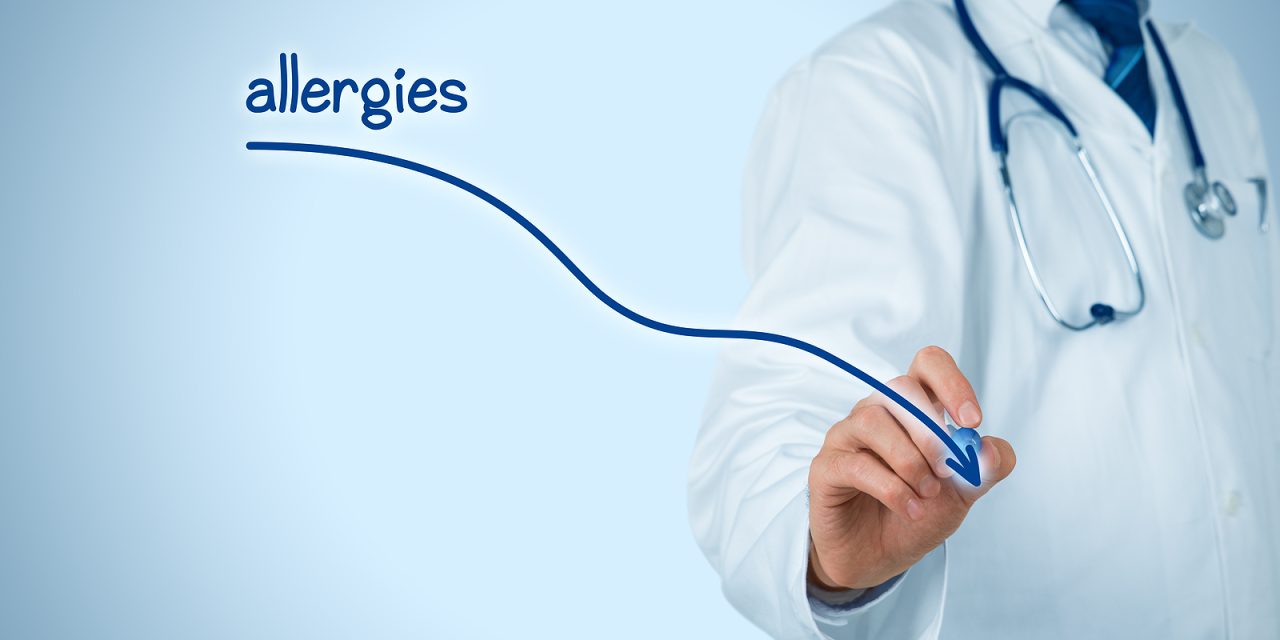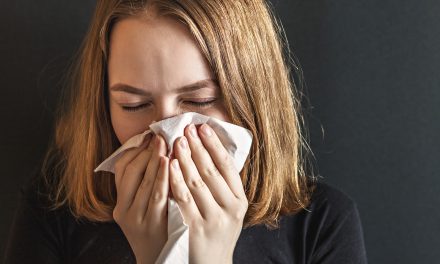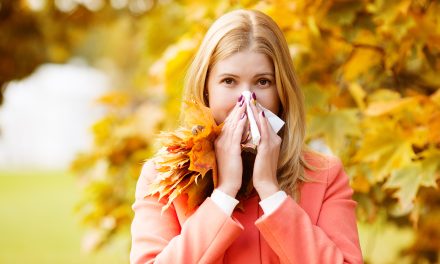Allergies are a common health issue affecting millions worldwide, but the process by which they develop can often seem complex. Essentially, allergies are a misdirected reaction of the immune system to harmless substances known as allergens. When exposed to an allergen, the immune system mistakenly identifies it as a threat, leading to an allergic reaction. Common allergens include pollen, dust mites, mold, pet dander, and certain foods.

The human immune system is designed to protect the body from harmful invaders like bacteria and viruses. In the case of allergies, however, the immune system’s defensive measures can cause unwanted symptoms. These range from mild, such as a runny nose or itchy eyes, to potentially life-threatening conditions like anaphylaxis. Allergic reactions can be immediate or develop over time, and understanding why and how they occur is crucial for effective management and treatment.
Key Takeaways
- Allergies result from an immune system response to non-harmful substances.
- Symptoms can be mild to severe, affecting various parts of the body.
- Proper management and treatment are essential for those with allergies.
Understanding Allergies
Allergies occur when the immune system reacts to foreign substances typically considered harmless. This section explores the nature of allergies and some of the most prevalent allergens causing these immune responses.
What Is an Allergy?
An allergy is an overreaction of the immune system to a substance that it erroneously deems threatening. This substance, known as an allergen, can come in various forms. When exposed to an allergen, the immune system produces IgE antibodies, which are designed to neutralize the foreign substance. Upon subsequent exposures, these IgE antibodies recognize the allergen and prompt certain immune cells to release chemicals, such as histamine, leading to the manifestation of various allergic symptoms.
Common Allergens
The list of potential allergens is extensive, but they can generally be categorized into several groups:
- Environmental allergens: Including pollen, dust mites, mold, and pet dander.
- Food allergens: Common ones include nuts, shellfish, milk, and eggs.
- Insect stings: Bee or wasp venom, for instance.
- Medications: Penicillin and other drugs can trigger allergies in some people.
- Chemicals: Certain cosmetics or cleaning products contain substances that can act as allergens.
Exposure to these allergens can lead to symptoms such as sneezing, itching, swelling, and more severe reactions such as anaphylaxis in highly sensitive individuals.
Immune Response in Allergies
The immune response in allergies is characterized by the production of antibodies and the release of histamine, leading to the array of symptoms commonly associated with allergic reactions.
Role of Antibodies
In the context of allergies, the immune system identifies a harmless substance as a threat and produces specific IgE antibodies. These antibodies bind to allergens – the substances that trigger allergic reactions. Upon exposure to the allergen, these IgE antibodies prompt immune cells to release various chemicals, causing the symptoms of an allergic reaction.
Histamine and Its Effects
One of the chemicals released is histamine, which plays a pivotal role in allergic responses. Histamine binds to receptors in blood vessels causing them to enlarge. This results in common allergic symptoms such as sneezing, itching, and increased mucus production. Histamine’s interaction with other cells can also lead to more severe symptoms, potentially triggering anaphylaxis, a serious and life-threatening reaction.
Types of Allergies
Allergies occur when the immune system reacts to foreign substances such as pollen or specific foods. They can manifest in various forms, each with distinct triggers and symptoms. Below is an exploration of common allergy types.
Seasonal Allergies
Seasonal allergies, often called hay fever or allergic rhinitis, are caused primarily by pollen from plants. Trees, grasses, and weeds release these tiny grains into the air to fertilize other plants. When someone with a predisposition to these allergens inhales them, their immune system may react, resulting in symptoms such as sneezing, a runny nose, and itchy eyes. Seasonal allergies can vary in severity and are generally tied to specific times of the year when certain plants pollinate.
Food Allergies
Food allergies occur when the immune system mistakenly identifies a harmless food protein as a threat. Food allergens can trigger reactions ranging from mild to severe, including anaphylaxis, which requires immediate medical attention. Common foods that may cause allergies include peanuts, tree nuts, fish, shellfish, milk, eggs, wheat, and soy. Symptoms can include tingling in the mouth, swelling of the lips, tongue, face, or throat, and hives.
Skin Allergies
Skin allergies manifest when the skin comes into contact with an allergen, leading to conditions such as eczema (atopic dermatitis) or contact dermatitis. Eczema is characterized by dry, itchy skin and rashes on the face, inside the elbows, behind the knees, and on the hands and feet. Contact dermatitis, on the other hand, is a red, itchy rash that can occur directly where something has touched the skin. Common triggers for skin allergies include nickel, dyes, latex, topical medications, and contact with pets.
Symptoms of Allergies
Allergy symptoms can affect various body parts, presenting as respiratory issues or skin reactions. These symptoms, which are the body’s response to allergens, can range from mild to severe.
Respiratory Symptoms
- Sneezing and Cough: Commonly triggered by airborne allergens such as pollen.
- Runny or Stuffy Nose: Inflammation in nasal passages can lead to this symptom.
- Wheezing/Shortness of Breath: Airway constriction may result in a wheezing sound or difficulty breathing, especially in asthma.
Skin Reactions
- Itching: Often accompanies various allergic reactions affecting the skin.
- Rash: Appears as an area of redness or irritation.
- Hives: Raised, itchy welts on the skin, which are a clear sign of an allergic reaction.
- Swelling: May be seen around the eyes, lips, or other areas where allergen exposure has occurred.
Severe Allergic Reactions
Severe allergic reactions go beyond mild symptoms and can be life-threatening. The most extreme form, anaphylaxis, requires immediate medical attention due to its rapid onset and potential to cause a severe drop in blood pressure and loss of consciousness.
Anaphylaxis
Anaphylaxis is an acute and potentially lethal allergic reaction that occurs rapidly. It is characterized by a number of symptoms, including but not limited to:
- Breathing difficulties: Tightening of the airways can lead to wheezing and trouble breathing.
- Skin reactions: These often include hives, itching, or flushed or pale skin.
- Drop in blood pressure: A sudden and severe drop in blood pressure can result in shock and can be fatal.
- Gastrointestinal symptoms: Nausea, vomiting, or diarrhea may occur.
- Cardiovascular changes: An increased heart rate or heart palpitations are often reported.
Prompt recognition and treatment are crucial when anaphylaxis occurs. It typically involves injections of epinephrine (adrenaline), which act rapidly to reduce the severity of the allergic response.
Factors Leading to Anaphylaxis
Anaphylaxis can be triggered by various allergens. Common causes include:
- Foods: Such as peanuts, tree nuts, fish, shellfish, milk, and eggs.
- Medications: Both prescription and over-the-counter drugs can be culprits.
- Insect stings: Bee, wasp, and hornet stings are notorious for causing anaphylactic reactions.
- Latex: Found in many medical and non-medical products.
Individual risk factors for developing anaphylaxis may include a history of allergies or previous anaphylactic reactions. If someone has experienced anaphylaxis in the past, they should be aware that they are at increased risk of another episode and should always carry an epinephrine auto-injector.
Diagnosis of Allergies
Diagnosing allergies is a critical step to manage and treat allergy symptoms effectively. The process typically involves a combination of allergy testing and a thorough review of the patient’s medical history.
Allergy Testing
Allergy testing is an essential tool in identifying the specific allergens that trigger a patient’s immune system. One common method is skin testing, where the skin is exposed to small amounts of various allergens and monitored for reactions such as redness, swelling, and itching. If a reaction occurs, it indicates sensitization to the tested substance. Health professionals may also conduct blood tests, such as the radioallergosorbent test (RAST) or the enzyme-linked immunosorbent assay (ELISA), to measure the presence of allergen-specific antibodies in the blood.
- Skin Prick Test: This is often the first test done when allergies are suspected.
- Intradermal Test: Provides a more sensitive assessment than skin prick tests.
- Patch Test: Identifies delayed allergic reactions, commonly to contact allergens.
- Blood Test: Useful when skin tests are not applicable, such as in patients with skin conditions or those on certain medications that may interfere with skin testing.
Medical History
Alongside testing, a detailed medical history is crucial. Allergists review the patient’s family history of allergies to understand potential genetic predispositions. They inquire about the frequency, duration, and severity of allergy symptoms, as well as any patterns related to time or environment that could point to specific allergens. Additionally, doctors consider any related changes in blood pressure or other vital signs during allergic reactions. This information helps create a personalized diagnosis and informs subsequent treatment plans.
- Symptoms Log: Patients are often asked to keep a record of their allergy symptoms and potential triggers.
- Family Health: Knowing whether immediate family members suffer from allergies can indicate a hereditary risk.
- Physical Examination: Doctors examine the condition of the eyes, ears, nose, throat, and skin for signs correlated with allergic reactions.
Allergy Treatments
Allergy treatments aim to alleviate symptoms and desensitize the immune system’s reaction to allergens. Medications and antihistamines can reduce immediate symptoms, while immunotherapy may offer a long-term solution by gradually reducing sensitivity to allergens.
Medications and Antihistamines
Medications for allergies span a range of options, with antihistamines forming the frontline defense. These drugs counteract the effects of histamine, a compound released by the immune system during an allergic reaction that contributes to symptom severity. Antihistamines can help control symptoms such as:
- Sneezing
- Runny nose
- Itchy eyes
For severe allergic reactions, epinephrine is often employed. This medication can quickly reduce symptoms during an anaphylactic reaction, which is potentially life-threatening. Users typically carry an epinephrine auto-injector for emergencies, ensuring immediate access to this critical treatment.
Immunotherapy and Allergy Shots
Immunotherapy involves a series of allergy shots that contain minute amounts of the allergen. Over time, these shots can decrease an individual’s sensitivity, leading to improved tolerance and fewer symptoms. Typically, this process spans three to five years and follows a two-phase approach:
- Build-Up Phase: Increases allergen exposure gradually.
- Maintenance Phase: Maintains consistent allergen levels to build immunity.
While immunotherapy requires a long-term commitment, it has the potential to provide lasting relief from allergies. It’s particularly effective for allergies to substances such as pollen, pet dander, dust mites, and insect stings.
Managing Allergies
Effective allergy management is rooted in identifying triggers and implementing both avoidance strategies and reliable remedies. Understanding specific allergens and how to mitigate exposure are key steps towards reducing symptoms and enhancing quality of life.
Avoiding Allergens
Avoiding allergens is often the most straightforward way to manage allergy symptoms. Here are some specific strategies:
- Dust and Dust Mites: Encase mattresses and pillows in allergen-proof covers, wash bedding in hot water weekly, and maintain low humidity indoors.
- Mold: Use dehumidifiers in damp areas of the home, fix water leaks, and clean moldy surfaces with a solution of 1 part bleach to 20 parts water.
- Pet Dander: Choose pets without fur or feathers, bathe pets regularly, and restrict their access to certain areas of the home, like bedrooms.
- Pollen: Keep windows closed during high pollen season, use air conditioning, and shower after being outdoors to remove pollen from skin and hair.
Home Remedies
Certain home remedies can also aid in the management of allergy symptoms:
- Saline Nasal Rinse: Rinse nasal passages with a saline solution to remove allergens and irritants.
- HEPA Filters: Utilize high-efficiency particulate air (HEPA) filters in vacuum cleaners and air purifiers to capture fine particles such as pollen, dust, and pet dander.
- Smart Choices: Opt for hypoallergenic bedding and avoid scented candles or air fresheners that can trigger symptoms.
- Food Allergy Management: Carefully read food labels to avoid the consumption of allergens and be aware of cross-contamination risks when eating out.
Allergy in Children
Allergies in children can manifest through various symptoms and are influenced by a combination of genetic and environmental factors. Awareness and proactive management are key to improving the quality of life for a child suffering from allergies.
Recognizing Allergy Signs
Children often show allergic reactions through visible signs which can involve the skin, respiratory system, and more. Common symptoms include:
- Skin reactions: Such as eczema or hives, characterized by itchy red patches or swellings on the skin.
- Respiratory issues: Including allergic asthma, which presents as difficulty breathing, coughing, and wheezing.
If a child’s symptoms include trouble breathing, severe hives, or swelling, they may be experiencing anaphylaxis, a life-threatening condition that requires immediate medical intervention. Detailed observations of the timing and context of these symptoms can help identify specific allergens responsible for triggering these responses.
Preventive Measures
To minimize the occurrence of allergic reactions, it is important to implement preventive strategies. This involves:
- Avoiding known allergens: Understand a child’s triggers through tests or history and minimize exposure.
- Creating an allergy-safe environment: Use hypoallergenic bedding, remove common indoor allergens like dust mites, and ensure good air quality.
- Considering medical interventions: In some cases, allergists may recommend medications or treatments such as immunotherapy for long-term allergy management.
By attentively managing a child’s environment and seeking appropriate medical advice, it is possible to significantly reduce the occurrence and impact of allergic reactions in children.
Emerging Research
Recent advancements in the field of allergology have provided significant insights into how allergies develop and how they can be treated more effectively. Focused studies are shedding light on the genetic factors that influence allergic reactions and innovative treatment strategies aimed at enhancing patient care.
Genetics and Allergies
Research has established a strong connection between an individual’s genetic makeup and their susceptibility to allergies. Genetic predisposition plays a crucial role in how the immune system responds to allergens. Scientists are deciphering the specific genes that are responsible for increased allergy risks, which can lead to targeted prevention strategies.
New Treatments
On the treatment front, there is an ongoing development of novel diagnostic and immunotherapy approaches. They include the design of allergen derivatives that aim to reduce the immune system’s overreaction to harmless substances. These emerging treatments offer hope for long-term allergy management and potential prevention in susceptible individuals.
Living with Allergies
Living with allergies requires a comprehensive approach to manage symptoms and maintain quality of life. Individuals with allergies often have to avoid known allergens and use medications to control reactions.
Allergy management strategies include:
- Identifying allergens: Through testing or observation, determining what triggers symptoms.
- Creating an allergen-free environment: Making home and work spaces as free from allergens as possible.
- Medication adherence: Regularly taking prescribed antihistamines or nasal sprays.
The immune system mistakenly identifies harmless substances as threats, leading to allergic reactions. Treatments aim to modulate this response. For severe allergies, one may carry epinephrine injectors to counteract anaphylaxis.
A well-managed environment significantly improves one’s quality of life. This includes:
- Regular cleaning: Reducing dust mites and pet dander.
- Air filters: Using HEPA filters to remove airborne allergens.
- Dietary adjustments: Avoiding foods that trigger allergic responses.
Here’s how individuals can adapt their daily habits:
- They should check pollen counts and limit outdoor activities when counts are high.
- Wear sunglasses and hats to block allergens physically.
- Choose hypoallergenic products to lessen reactions.
By integrating these practices, individuals can lessen the impact of allergies on daily activities.
Frequently Asked Questions
This section addresses some key inquiries concerning the development, treatment, and prevention of allergies.
What are the common factors contributing to the development of allergies in babies?
Babies can develop allergies due to genetics if their parents have allergies, or through early exposure to allergens. Environmental factors like pollution or dietary elements can also play a role.
What causes allergies to manifest later in adulthood?
Allergies may appear in adulthood following a change in a person’s environment, increased exposure to allergens, or alterations in their immune system. Stress and hormonal changes are additional factors that can trigger adult-onset allergies.
What are the different treatment options available for allergy management?
Treatment for allergies often involves avoiding known allergens, using medications such as antihistamines, nasal corticosteroids, or allergen immunotherapy, which gradually desensitizes the immune response.
Can you detail the various types of allergies individuals may experience?
Individuals may experience allergies to substances such as pollen, pet dander, certain foods, insect stings, and medications. Contact allergies from substances like latex or nickel are also common.
What is the progressive sequence observed in allergic reactions?
Allergic reactions typically begin with the body’s recognition of an allergen, followed by an immune response that can range from mild symptoms like itchiness to severe reactions like anaphylaxis.
How can one prevent allergies from developing or worsening?
Preventing allergies involves minimizing exposure to allergens, following a healthy diet, maintaining a clean environment, and, in some cases, using preventative medication or undergoing immunotherapy.




















